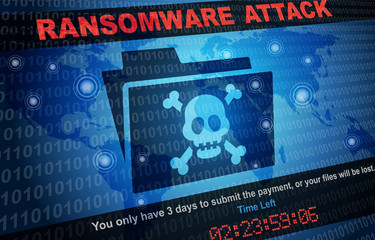Learn everything about Multi-Factor Authentication (MFA), the essential security mechanism that protects your online accounts with layers of defense. Explore its types, benefits, real-world applications, and how to implement MFA effectively. Strengthen your cybersecurity posture with practical examples and expert insights.

Table of Contents
Introduction
In today’s interconnected world, cyber threats are evolving at an alarming pace. Traditional password-based security is no longer enough to safeguard sensitive information. Enter Multi-Factor Authentication (MFA)—a robust security mechanism designed to add multiple layers of protection to online accounts and systems. This blog explores MFA’s fundamentals, types, benefits, and practical examples, making it essential reading for anyone serious about cybersecurity.
What is Multi-Factor Authentication (MFA)?
Multi-Factor Authentication (MFA) is a security method that requires users to provide two or more verification factors to access a resource, such as an application, online account, or network. These factors fall into three main categories:
- What You Know (e.g., passwords or PINs)
- What You Have (e.g., hardware tokens or smartphones)
- What You Are (e.g., biometrics like fingerprints or facial recognition)
For instance, when logging into an online banking account, you may need to enter a password (something you know) and confirm a code sent to your phone (something you have). This layered approach significantly reduces the likelihood of unauthorized access.

The History of Multi-Factor Authentication
The concept of using multiple layers of authentication dates back decades, initially employed in high-security environments like military bases. With the advent of digital systems and the rise of cyber threats, MFA became a critical tool for businesses and individuals alike. Modern MFA gained traction with the introduction of hardware tokens in the 1990s, followed by SMS-based authentication and, more recently, biometric verification technologies.
Types of Multi-Factor Authentication
MFA methods can be categorized into six key types, each offering unique strengths:
1. Knowledge-Based (What You Know)
- Examples: Passwords, PINs, security questions.
- Pros: Simple to implement.
- Cons: Vulnerable to phishing, brute force attacks, and social engineering.
2. Possession-Based (What You Have)
- Examples: Hardware tokens, smartphones, USB security keys.
- Pros: Stronger security than passwords.
- Cons: Items can be lost or stolen.
3. Biometric (What You Are)
- Examples: Fingerprint scans, facial recognition, iris scans.
- Pros: Hard to replicate.
- Cons: Requires specialized hardware; privacy concerns.
4. Pattern-Based (What You Do)
- Examples: Typing rhythm, mouse movement patterns.
- Pros: Unique to individuals.
- Cons: Behavioral changes can affect accuracy.
5. Location-Based (Where You Are)
- Examples: GPS coordinates, IP address verification.
- Pros: Detects access from unusual locations.
- Cons: Susceptible to spoofing if not implemented carefully.
6. Time-Based (When You Are)
- Examples: Access restrictions during specific timeframes.
- Pros: Adds temporal control.
- Cons: May cause inconvenience due to time zone issues.
How MFA Works: A Practical Example
Imagine accessing your corporate email account:
- You enter your password (knowledge-based).
- A one-time code is sent to your smartphone (possession-based).
- For additional security, the system asks for a fingerprint scan (biometric).
Even if an attacker compromises your password, they would still need access to your phone and fingerprint—making unauthorized entry highly unlikely.
Benefits of Multi-Factor Authentication
- Enhanced Security: Reduces the risk of phishing and brute force attacks.
- Regulatory Compliance: Meets security standards like GDPR, HIPAA, and PCI-DSS.
- User Trust: Demonstrates a commitment to protecting sensitive data.
- Scalability: Can be adapted to various industries and use cases.
Real-World Applications of Multi-Factor Authentication
- Online Banking: Protects financial transactions with OTPs and biometric checks.
- Corporate Networks: Secures remote access for employees using VPNs with MFA.
- E-commerce: Prevents unauthorized purchases through additional verification.
- Social Media: Guards against account takeovers with app-based authentication.
Implementing MFA: Tools and Tips
Popular MFA Tools
- Google Authenticator: Generates time-based OTPs.
- Duo Security: Offers seamless integration with apps and systems.
- YubiKey: A USB security key for robust possession-based authentication.
Best Practices for MFA
- Combine at least two diverse factors (e.g., password + biometrics).
- Regularly update security policies to include MFA for critical systems.
- Educate users on avoiding phishing attempts targeting MFA codes.
Who Uses MFA?
From small businesses to global enterprises, MFA is widely adopted by organizations aiming to strengthen their cybersecurity posture. Notable users include:
- Financial Institutions: Banks and payment gateways.
- Healthcare Providers: For securing patient records.
- Tech Giants: Google, Microsoft, and Apple employ MFA in their products.
Where to Go Next
To further explore MFA:
- Set Up MFA on Your Accounts: Start with email and social media.
- Learn Advanced Techniques: Research adaptive authentication methods.
- Stay Updated: Follow cybersecurity trends and tools for enhanced MFA.
Video Link :
Conclusion
Multi-Factor Authentication is no longer optional in a world rife with cyber threats. By integrating MFA, individuals and organizations can significantly enhance their defenses against unauthorized access. Start your journey toward better security today—because when it comes to protecting your data, one layer of defense is never enough.
Would you like me to generate custom visuals for this blog? 😊
MORE
- Zed Attack Proxy (ZAP): A Hacker’s Best Friend 13
- What is an IDOR Attack? A Beginner’s Guide to Insecure Direct Object References 12
- VAPT Demystified: A Complete Guide to Vulnerability Assessment & Penetration Testing 10
- Hackers Playbook: 15 Common Cyber attack Techniques
- 9 Career Job in Cybersecurity : A Comprehensive Guide
- How to Spot a Phishing Email : Prevent With Detailed Analysis 06
- Top 10 Cybersecurity Myths Debunked – Protect Yourself Online
- Phases of Hacking
- Mastering DVWA: Complete Guide to the Damn Vulnerable Web App for Ethical Hacking
- Web Application Penetration Testing (WAPT)
- Can you hack your wifi ?




